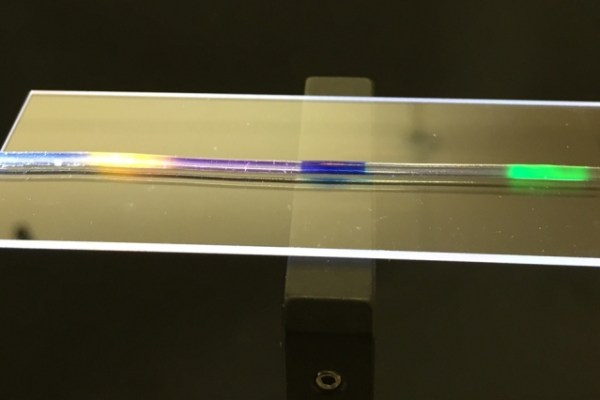A new type of optical fiber – a channel capable of transporting light – developed by MIT and Harvard Medical School researchers could make it far easier to detect the onset of disease early, or track the progress of healing and treatment. The new “stretchy,” rubber-like optical fiber created by the team can be stretched and bent, and is made almost entirely of water in the form of hydrogel, meaning it can better withstand conditions in the human body without damaging its surroundings.
Researchers already use fiber optics to activate cells in the body, and often to trigger neurons located in the brain, but the existing materials’ uses are inflexible and potentially dangerous to patients. The new material is both tough and flexible, allowing it to work in biomatter like the brain without also posing a risk to surrounding biological material. Plus, since they’ve managed to create a core optical transmission medium that can effectively transmit light without it also fading away or losing signal, the fibers still accomplish the kinds of things researchers and medical professionals need them to.
Because of the combined properties of flexibility and transmission without signal loss, the researchers behind the project can see a time when their creation might be implanted along the length of a limb, for instance. Because the fiber can signal where it’s been stretched and when, owing to the way light moves in those sections, the implanted material could then tell an observer when flexibility is returning to an injured limb, for instance. They could also indicate when a patient’s internal environment is subject to changing conditions, like inflammation, which would act as an early warning system for signs of disease, including potentially cancer.
Fiber optic wires embedded throughout a human’s insides also obviously conjures up visions of enhanced cybernate humans. Researchers aren’t pointing to any of those potential use cases, however – even the more modest goal of trying to help us heal more effectively represents significant progress.
